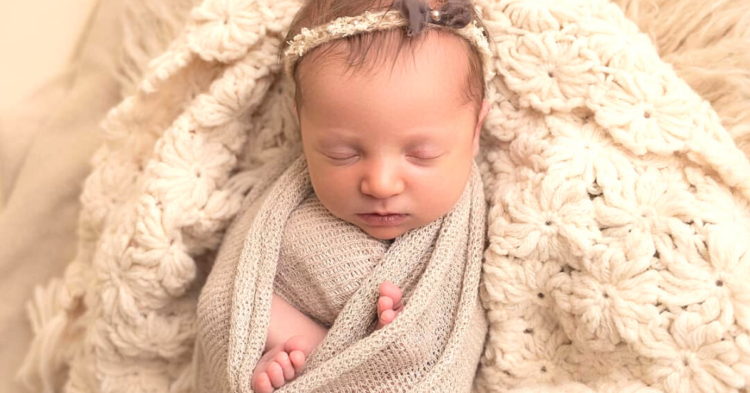Reproductive technology has made leaps and bounds to help would-be parents struggling to conceive achieve their dreams. Sadly, science can’t help everybody who wants to start a family actually do so, but those in need of the assistance have more options than ever — and some of the technologies of yesteryear are still good as well.
It’s hard to believe, but Tina Gibson is only slightly older than the embryo that just resulted in the birth of her second daughter.
Tina, 29, was born in April 1991. In October 1992, an embryo was frozen for future use. In February 2020 that embryo was thawed and implanted into Tina, and in October 2020 Tina gave birth to her daughter, Molly.
Not long ago, Tina and her husband, Ben, thought they might never be parents. Struggling with infertility, the pair tried for five years to start a family together. As they started examining their options, Tina’s parents happened to be watching TV when the local news station aired a story about embryo adoption, the BBC reported.
“If my parents hadn’t seen this on the news then we wouldn’t be here,” Tina told the BBC. “I feel like it should come full circle.”
That fateful story helped turn their attention to a local non-profit, the National Embryo Donation Center.

The NEDC stores embryos that couples undergoing in vitro fertilization couldn’t use and opted to donate instead. Families in the Gibsons’ position can apply to the NEDC to adopt an embryo that’s genetically unrelated to them and use that to give birth. There are about a million embryos frozen in the U.S. right now, according to the NEDC.
Molly wasn’t the first embryo that Tina and Ben adopted and brought to term, however.
Molly has an older sister, Emma, who is amazingly a genetic sibling to Molly. In 2017, Tina and Ben made headlines for Emma’s birth, which resulted from another embryo frozen in 1992. At the time, it was believed to be a record-setting amount of time for an embryo to be frozen and result in a live birth. Molly’s birth seems to have broken that record.
“It’s unbelievable,” Tina told Today . “It feels like a miracle.”
But Tina and Ben don’t care much for setting records.
“With Emma, we were just so smitten to have a baby,” Tina told CNN . “With Molly, we’re the same way. It’s just kind of funny — here we go again with another world record.”
“We’re over the moon,” she added to the BBC. “I still get choked up. If you would have asked me five years ago if I would have not just one girl, but two, I would have said you were crazy.”
While the Gibsons’ story is inspiring, doctors urge a bit of caution with it.
“This is truly a story of one Hail Mary and a lot of luck,” Dr. Brian Levine of the Manhattan fertility clinic CCRM Fertility told Today . “I don’t want couples to think they can just go online and rescue embryos from 25 years ago and they’ll have the same result.”
While today’s technology would likely allow embryos to stay frozen and viable for much longer, it’s a rarity with the tech from the ’80s and ’90s, which used a slower freezing process and didn’t use proper storage vessels, Dr. Levine explained.

















































